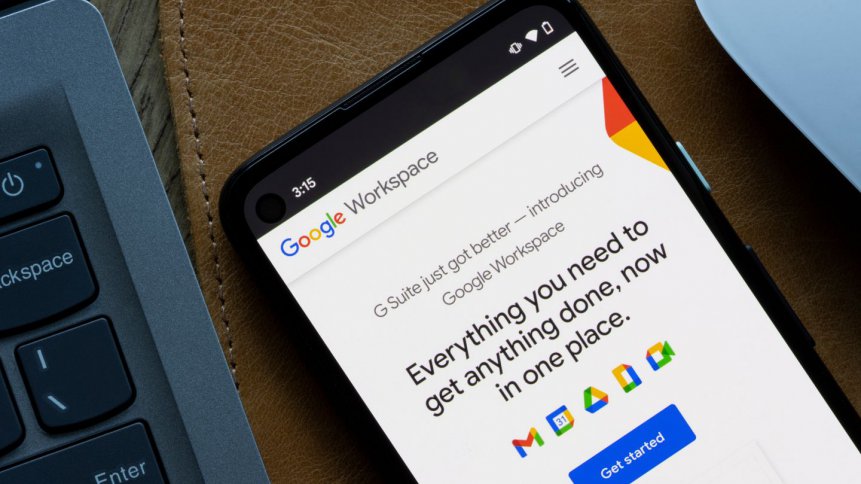Google pulls Workspace rug out from under SMBs

The popular myth about drug dealers is that the first hit is free, a loss leader simply to get you addicted to their product. Then, when you’ve built a life around the product, the price goes up, and up, and up. In entirely unrelated news, Google just eradicated its free Google Workspace offering for small to medium businesses after more than a decade.
Google Workspace, which is what everyone still thinks of as the G Suite, has been free for SMBs through several phases of development since Gmail was launched in 2004, with the original Docs and Sheets (Word and Excel equivalents, but Googled) coming in 2006. Back then, Google made a promise that the apps would be free – for life.
That’s a promise on which an awful lot of business-owners banked. Google says that over 3 billion people use Workspace, and by far the majority of SMB users have been using the sub-300-user free version, some of them for the whole duration of their business’ life.
This year, Google announced that all of those SMB free version users would be migrated to a paid plan. If they didn’t choose one voluntarily, they would be auto-migrated to a plan, initially by May 1st, and ultimately by June 27th. If they don’t pay by August 1st, their accounts will be suspended – irrespective of how long they’ve used the service, and how much of their business architecture and institutional memory was created on the system.
The New Google Normal
Now the SMB-appropriate, sub-300-users subscription will cost between $6-18 per user, per month, depending on which service level you need. That means a minimum additional cost of $21,600 for every SMB with 300 users who wants to continue using the system, and a maximum hit, for the full version with whistles, bells, and every add-on you could need, of $64,800 per year. All while inflation is climbing, gas prices are rising, and the cost of living is becoming increasingly unmanageable.
There is of course always a likelihood that business service providers will raise their prices – especially when faced with an economy dealing with the aftermath of a global pandemic and a substantial period of lockdown. Add Russian squeezing of the gas flow and the global supply chain effects of the invasion of Ukraine, and there’s at least some logic to the idea of every business trying to squeeze new revenue streams out of existing user-bases.
But this is Google, not some adorable mom and pop cookie business down the block. While it will always be hyperbole to say anyone “owns” the internet, if anyone currently comes closest, it’s Google. The vast discrepancy between Google’s record-breaking revenue in 2021 – $257 bn – and almost anything achievable by an SMB has left a bad taste in the mouths of many SMB owners. Even though Google’s first quarter of 2022 saw it lose $1.5 bn of net profit compared with the same period the previous year, perhaps signalling a trigger for the search for additional revenue-streams, somehow, many of the SMBs affected find it quite difficult to spare a tear for the all-encompassing supergiant.
Google, The Serial Killer
In some respects though, it’s worth remembering the regularly ruthless approach Google takes to projects and platforms in which it professes itself enthusiastically behind, right up to the moment at which it pulls the plug.
Its compulsion to be involved in every potential Next Big Market leads Google to regularly invest in its own versions of platforms or apps, only to later kill them off with little ceremony. In it’s so much a fact of Google life that there’s a Twitter handle, @killedbygoogle, set up precisely to chart when Google creations, rebrands, purchases or developments get hit by the scythe of dwindling interest or profitability.
- Google Toolbar, for instance, a browser toolbar allowing for web search within browsers like Internet Explorer and Firefox, lasted all the way from 2000 to 2021 before Google killed it.
- Backup and Sync – an often useful tool that let users backup and sync their work from Google Drive to their local machine and vice versa, lasted only four years, 2017-2021, before it met the Google Reaper.
- Google Chrome Apps? We may not see its like again, after it was squelched after 11 years in 2022.
And so on.
The point of difference though is that relatively few businesses built themselves around a core of Google Toolbar, whereas Google Workspace is and has been the fundamental underpinning of lots of SMBs.
It’s easy to argue that there’s a degree of Caveat Emptor (Buyer Beware) involved in this – if you’re going to invest in business-critical systems, never put all your eggs in one basket, especially if the basket is offered to you for free.
But for all its serial killing tendencies on things in which it has invested time and money, Google is one of the world’s biggest and most successful tech companies. SMBs should have been fundamentally able to put all their eggs and a chicken to boot into its basket, and it has gained the trust of all those companies on the grounds that it would never seek to monetize its free legacy version. Perhaps the more appropriate proverb should be “If you’re going to put all your eggs in one basket, make sure the basket-owner can’t hold your eggs to ransom any time they want.”










